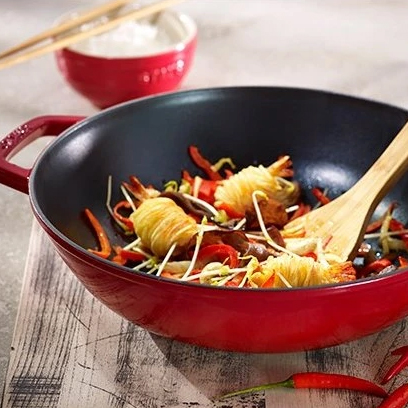What's in that wok everybody's got? We know. He's simply a superhero in the kitchen. It heats up to the highest temperature in no time, so you can prepare dishes with irresistible flavour and aroma in no time, while retaining maximum vitamins and minerals. Now all you have to do is choose the one the best wok for your purposes and see what you can cook on it.
5 reasons to get a wok
- Quick food preparation - within 10 minutes you can have food on your plate.
- Healthy cooking - thanks to the short heat treatment, the ingredients retain their vitamins and other nutritionally valuable substances.
- Versatility - besides quick frying, you can also cook in the wok and if you use the lid, you can also stew.
- Wok hei - this is the authentic combination of flavour and aroma that only a wok can bring to a dish.
- Wide choice of materials - you can choose exactly the wok that suits your needs. If you reach for a pan made of steel or cast iron, you'll probably be able to pass it on to the next generation.















%20kopie.jpg)